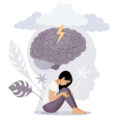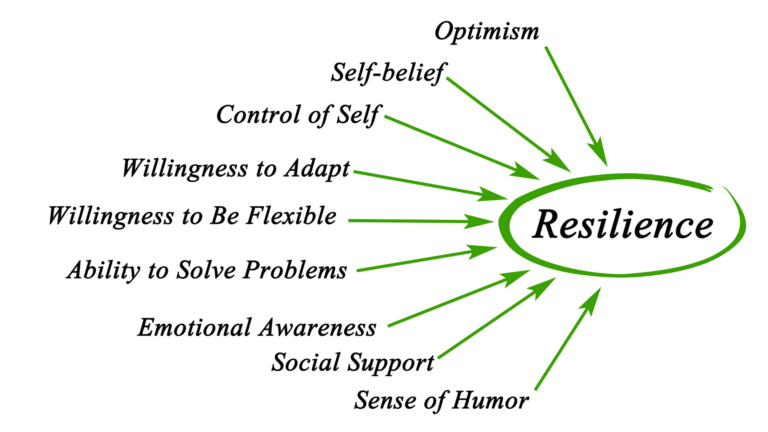In today’s fast-paced and ever-changing world, the ability to self-regulate emotions and build resilience has become crucial for individuals of all ages. For students, the classroom is not only a place of learning but also a space where they develop important social and emotional skills that will shape their future success. In this blog post, we will explore the concept of self-regulation and its significance in the classroom setting. We will delve into the importance of emotional control for effective learning, the benefits of resilience in academic and personal growth, and the role self-regulation plays in social interactions. Furthermore, we will discuss a range of strategies that educators can employ to foster self-regulation in their students, including teaching emotional literacy, modelling and practising self-regulation, using mindfulness techniques, and promoting a growth mindset. Additionally, we will address the challenges that may arise when implementing self-regulation strategies, such as supporting struggling students and coping with resistance. Finally, we will explore ways to evaluate and enhance self-regulation programs, including assessing their effectiveness, engaging parents and the community, and continuously improving and updating the initiatives. By nurturing emotional control and resilience in the classroom, we can empower students to navigate challenges, regulate their emotions, and thrive academically and personally.
Understanding Self-Regulation: Fundamentals of Emotional Control and Resilience
Self-regulation is the ability to manage and control one’s emotions, thoughts, and behaviours to achieve desired outcomes. It is a fundamental skill that plays a crucial role in our daily lives, including our interactions with others, decision-making processes, and overall well-being. In the context of the classroom, self-regulation becomes even more significant as it directly impacts a student’s ability to learn, engage, and succeed academically.
What is Self-Regulation?
Self-regulation encompasses various cognitive and emotional processes that allow individuals to monitor, evaluate, and modify their thoughts, feelings, and behaviours. It involves being aware of one’s emotions, understanding their impact, and effectively managing them to achieve desired outcomes. Self-regulation is not about suppressing or denying emotions, but rather about recognising and responding to them in a balanced and constructive manner.
The Components of Self-Regulation
Self-regulation involves several interconnected components that work together to foster emotional control and resilience. These components include:
- Emotional Awareness: The ability to recognise and understand one’s emotions, as well as the emotions of others. It involves being able to accurately label and identify different emotions and their intensity.
- Emotional Regulation: The capacity to manage and modulate one’s emotional responses. This includes strategies to regulate emotional arousal, such as calming techniques, problem-solving, and reframing negative thoughts.
- Impulse Control: The ability to resist impulsive urges and delay gratification. It involves thinking before acting, considering consequences, and making reasoned decisions.
- Goal-Directed Persistence: The capability to stay focused and motivated towards achieving a goal, even in the face of challenges or setbacks. It requires maintaining effort, resilience, and adaptability.
- Cognitive Flexibility: The capacity to shift perspectives, adapt to new situations, and consider alternative solutions. It involves being open-minded, creative, and able to adjust strategies as needed.
The Development of Self-Regulation
Self-regulation skills are not innate; they develop over time through a combination of biological, environmental, and experiential factors. Infants begin to develop basic self-regulation skills, such as self-soothing, through the support of caregivers. As children grow, they continue to refine these skills through interactions with peers, teachers, and their environment.
The Benefits of Self-Regulation in the Classroom
Developing self-regulation skills in the classroom setting has numerous benefits for students. These benefits include:
- Improved Academic Performance: Students who can effectively manage their emotions and impulses are better able to focus, concentrate, and engage in learning activities. They are more likely to set goals, persist in their efforts, and demonstrate higher levels of academic achievement.
- Enhanced Social-Emotional Skills: Self-regulation fosters empathy, self-awareness, and social competence. It enables students to navigate social interactions, resolve conflicts, and build positive relationships with peers and teachers.
- Increased Resilience and Well-being: Self-regulated individuals are better equipped to cope with stress, setbacks, and challenges. They are more likely to bounce back from adversity, maintain positive mental health, and experience overall well-being.
- Long-Term Success: Self-regulation skills are not only beneficial in the classroom but also in various other aspects of life. Students who develop strong self-regulation skills are more likely to succeed academically, professionally, and personally.
Understanding the fundamentals of self-regulation provides a solid foundation for educators to recognise its importance and implement effective strategies in the classroom. By nurturing self-regulation skills, teachers can empower students to regulate their emotions, make responsible choices, and thrive academically and personally.
The Importance of Self-Regulation in the Classroom
Self-regulation is not just a nice-to-have skill; it is a critical component of a successful and productive classroom environment. The ability to self-regulate impacts students’ learning outcomes, social interactions, and overall well-being. In this section, we will explore why self-regulation is essential in the classroom and how it positively influences various aspects of a student’s educational journey.
Why Emotional Control is Essential for Learning
Emotional control is a key aspect of self-regulation that significantly impacts a student’s ability to learn effectively. When students are unable to regulate their emotions, they may become easily overwhelmed, distracted, or disengaged, hindering their capacity to absorb and process new information. On the other hand, students who possess strong emotional control skills can manage challenging emotions, stay focused, and engage in learning tasks with greater ease. By fostering emotional control in the classroom, educators create an environment that supports optimal learning experiences for all students.
How Resilience Benefits Students Academically and Personally
Resilience, another important aspect of self-regulation, plays a vital role in a student’s academic and personal growth. Resilient students are better equipped to bounce back from setbacks, persevere through challenges, and maintain a positive mindset. This resilience not only helps students overcome academic hurdles but also prepares them for the complexities of life beyond the classroom. Students who develop resilience through self-regulation are more likely to exhibit determination, adaptability, and a willingness to take on new challenges, leading to long-term success in both academic and personal domains.
The Role of Self-Regulation in Social Interactions
Self-regulation is not limited to individual emotional control; it also plays a crucial role in social interactions within the classroom. Students who can regulate their emotions are better equipped to navigate conflicts, empathise with others, and communicate effectively. By developing self-regulation skills, students can regulate their emotional responses in social situations, leading to more positive and constructive interactions with peers and teachers. This, in turn, fosters a supportive and inclusive classroom environment that promotes collaboration, empathy, and respect.
The importance of self-regulation in the classroom cannot be overstated. Emotional control enhances students’ ability to learn, resilience empowers them to overcome challenges, and self-regulation in social interactions cultivates positive relationships. By recognizing and prioritizing the significance of self-regulation, educators can create an environment that supports students’ emotional well-being, facilitates optimal learning experiences, and sets the stage for long-term success.
Strategies for Fostering Self-Regulation in Students
Fostering self-regulation in students is a dynamic process that requires intentional strategies and approaches. In this section, we will explore a range of effective strategies that educators can employ to nurture self-regulation skills in their students. These strategies encompass teaching emotional literacy, modelling and practising self-regulation, using mindfulness techniques, and promoting a growth mindset.
Teaching Emotional Literacy
Emotional literacy is the foundation of self-regulation. By teaching students to recognise, understand, and express their emotions, educators provide them with the necessary tools to effectively regulate their emotional responses. Some strategies for teaching emotional literacy include:
- Emotion Identification: Help students identify and label different emotions by providing examples, engaging in discussions, and using visual aids such as emotion charts or emotion cards.
- Emotion Regulation Vocabulary: Teach students a wide range of emotion vocabulary to enhance their emotional awareness and ability to articulate their feelings.
- Emotional Reflection: Encourage students to reflect on their emotions and the situations that trigger them. This promotes self-awareness and helps students identify patterns in their emotional responses.
- Empathy Building: Foster empathy by encouraging students to understand and consider the emotions and perspectives of others. This helps develop social-emotional skills and promotes positive relationships in the classroom.
Modeling and Practicing Self-Regulation
Modelling and practising self-regulation is an essential strategy for students to observe and learn effective self-regulation skills. Educators can serve as role models by demonstrating self-regulation in their behaviour and responses. Some strategies for modelling and practising self-regulation include:
- Self-Reflection: Model self-reflection by openly discussing your own emotions and how you regulate them. Share personal experiences and strategies for managing emotions in challenging situations.
- Self-Control Techniques: Teach and model specific self-control techniques, such as deep breathing, positive self-talk, or taking a break, that students can use to manage their emotions and impulses effectively.
- Problem-Solving Skills: Teach students problem-solving skills to help them navigate challenging situations. Encourage them to identify the problem, brainstorm possible solutions, and evaluate the outcomes of each solution.
- Self-monitoring: Guide students to monitor their own emotions, thoughts, and behaviours. Encourage them to reflect on their progress in self-regulation and set goals for improvement.
Using Mindfulness Techniques
Mindfulness practices can be powerful tools for developing self-regulation skills in students. Mindfulness involves paying attention to the present moment, non-judgmentally, and with a sense of curiosity. Incorporating mindfulness techniques in the classroom can help students cultivate self-awareness, focus, and emotional control. Some strategies for using mindfulness techniques include:
- Mindful Breathing: Teach students various breathing exercises that promote relaxation and focus. Encourage them to practice deep breathing when feeling stressed or overwhelmed.
- Body Scan: Guide students through a body scan exercise, where they focus their attention on different parts of their body, noticing sensations, and releasing tension.
- Mindful Listening: Engage students in mindful listening activities, such as listening to calming music or nature sounds, and encouraging them to pay attention to the sounds and sensations in their environment.
- Mindful Movement: Incorporate mindful movement activities, such as yoga or stretching exercises, to help students connect their body and mind and cultivate a sense of calm and presence.
Promoting Growth Mindset
Promoting a growth mindset in students is essential for fostering self-regulation. A growth mindset emphasises the belief that abilities and intelligence can be developed through effort, practice, and perseverance. It encourages students to view challenges as opportunities for growth and learning. Some strategies for promoting a growth mindset include:
- Positive Reinforcement: Provide specific, constructive feedback that focuses on effort, improvement, and strategies used rather than solely on outcomes or grades.
- Encouraging Persistence: Emphasise the importance of perseverance and resilience in the face of challenges. Help students develop a “never give up” attitude and celebrate their progress and achievements along the way.
- Teaching the Power of “Yet”: Encourage students to use the word “yet” when faced with difficulties or setbacks. For example, instead of saying “I can’t do it,” encourage them to say “I can’t do it yet, but I will keep trying.”
- Promoting a Learning Culture: Foster a classroom environment that values mistakes, encourages risk-taking, and celebrates the learning process. Encourage students to share their challenges and mistakes, and discuss strategies for overcoming them.
By implementing these strategies, educators can create a supportive and empowering classroom environment that promotes self-regulation skills in students. Teaching emotional literacy, modelling self-regulation, using mindfulness techniques, and promoting a growth mindset are powerful ways to nurture students’ ability to regulate their emotions and behaviours effectively.
Addressing Challenges in Promoting Self-Regulation
Promoting self-regulation in the classroom is not without its challenges. Some students may struggle with self-regulation skills, while others may resist or find it difficult to engage in the strategies implemented by educators. In this section, we will explore common challenges that may arise when promoting self-regulation and provide strategies for addressing them effectively.
Recognizing and Supporting Students Struggling with Self-Regulation
- Identifying Signs of Struggle: Educators should be attentive to signs that indicate a student may be struggling with self-regulation. These signs may include difficulty managing emotions, impulsive behaviour, poor attention and focus, or challenges in social interactions.
- Individualized Support: Provide individualized support to students who are struggling. This may involve working with the student’s support team, such as counsellors or special education professionals, to develop targeted interventions and accommodations.
- Teaching Self-Regulation Strategies: Teach struggling students specific self-regulation strategies tailored to their needs. Break down the strategies into smaller steps, provide visual support, and offer additional practice opportunities.
- Building Relationships: Foster positive relationships with struggling students. Create a safe and supportive environment where they feel comfortable discussing their challenges and seeking guidance. Offer empathy, understanding, and encouragement to help them develop self-regulation skills.
Coping with Resistance to Self-Regulation Strategies
- Understanding Resistance: Recognise that resistance to self-regulation strategies is not uncommon. Some students may resist due to discomfort, fear of change, or a lack of understanding of the benefits. Seek to understand the underlying reasons for resistance.
- Communicating the Purpose: Communicate the purpose and benefits of self-regulation strategies to students. Help them understand how these strategies can support their well-being, academic success, and personal growth.
- Providing Choice and Autonomy: Offer students some autonomy and choice in selecting self-regulation strategies that work best for them. When students feel empowered and have ownership over their learning, they are more likely to engage in the strategies willingly.
- Gradual Implementation: Introduce self-regulation strategies gradually, allowing students time to adjust and become comfortable. Start with small, manageable steps and gradually increase the complexity and duration of the strategies.
Adapting Strategies for Different Age Groups and Needs
- Age-Appropriate Strategies: Tailor self-regulation strategies to be developmentally appropriate for different age groups. Younger students may require more concrete and visual strategies, while older students can engage in more abstract and reflective practices.
- Individualized Approaches: Recognise that students have diverse needs and learning styles. Adapt self-regulation strategies to accommodate these individual differences, providing additional support or modifications as needed.
- Flexible Implementation: Be flexible in implementing self-regulation strategies. Allow students to choose strategies that resonate with them, and provide options for adapting or modifying strategies based on individual needs.
- Collaboration with Colleagues: Collaborate with colleagues to share strategies and experiences. By working together, educators can gain insights and ideas for adapting self-regulation strategies to meet the unique needs of their students.
Navigating challenges in promoting self-regulation requires patience, understanding, and flexibility. By recognizing and supporting struggling students, addressing resistance, and adapting strategies to different age groups and needs, educators can create an inclusive and supportive environment that fosters self-regulation skills in all students.
Evaluating and Enhancing Self-Regulation Programs
Implementing self-regulation programs is just the beginning. To ensure their effectiveness and make continuous improvements, it is essential to evaluate and enhance these programs. In this section, we will explore strategies for assessing the effectiveness of self-regulation interventions, engaging parents and the community, and continuously improving and updating self-regulation programs.
Assessing the Effectiveness of Self-Regulation Interventions
- Data Collection: Gather data to assess the impact of self-regulation interventions. This may include pre and post-assessments, observations, student self-reports, and feedback from teachers and parents.
- Quantitative Measures: Use quantitative measures, such as standardized assessments or behaviour checklists, to evaluate changes in students’ self-regulation skills and academic performance.
- Qualitative Feedback: Gather qualitative feedback through interviews, focus groups, or surveys to gain insights into students’ experiences, perceptions, and challenges related to self-regulation.
- Long-Term Follow-Up: Conduct long-term follow-up assessments to determine the sustainability of self-regulation skills and the lasting impact of interventions.
Engaging Parents and Community in Self-Regulation Initiatives
- Parent Education and Involvement: Educate parents about the importance of self-regulation and provide resources and strategies for promoting self-regulation at home. Involve parents in workshops, meetings, or parent-teacher conferences to discuss their child’s progress and collaborate on strategies.
- Community Partnerships: Collaborate with community organisations, such as mental health agencies or after-school programs, to provide additional support and resources for self-regulation initiatives.
- Home-School Connection: Foster open lines of communication between home and school to ensure consistency in promoting self-regulation skills. Share information about self-regulation strategies used in the classroom and encourage parents to reinforce these strategies at home.
- Community Awareness Campaigns: Raise awareness about the importance of self-regulation through community-wide campaigns, workshops, or public events. Engage local organisations, businesses, and community leaders to support and promote self-regulation initiatives.
Continuously Improving and Updating Self-Regulation Programs
- Teacher Reflection and Feedback: Encourage teachers to reflect on their own experiences and gather feedback from students, colleagues, and administrators regarding the effectiveness of self-regulation strategies. Use this feedback to make necessary adjustments and improvements.
- Professional Development: Provide ongoing professional development opportunities for teachers to enhance their understanding of self-regulation and learn new strategies and techniques. Stay updated on the latest research and best practices in self-regulation education.
- Continuous Program Evaluation: Regularly evaluate the self-regulation program as a whole, considering its goals, objectives, and implementation strategies. Use evaluation findings to identify areas for improvement and make necessary adjustments.
- Collaborative Learning Communities: Foster collaborative learning communities among educators to share successes, challenges, and strategies related to self-regulation. Encourage collaboration and mutual support to enhance the effectiveness of self-regulation programs.
By evaluating the effectiveness of self-regulation interventions, engaging parents and the community, and continuously improving and updating self-regulation programs, educators can ensure that students receive the best possible support in developing and enhancing their self-regulation skills. This commitment to evaluation and enhancement ultimately leads to more effective self-regulation programs and increased student success.
Related posts:
 Creating Safe Spaces: Strategies for Fostering Healing and Support in Trauma-Informed Classrooms
Creating Safe Spaces: Strategies for Fostering Healing and Support in Trauma-Informed Classrooms
 Addressing Behaviour through a Trauma-Informed Lens: Strategies for Cultivating Positive Classroom Culture
Addressing Behaviour through a Trauma-Informed Lens: Strategies for Cultivating Positive Classroom Culture
 Understanding Trauma-Informed Education: Building Resilience in the Classroom
Understanding Trauma-Informed Education: Building Resilience in the Classroom
 Promoting Goal Setting and Planning Skills in the Classroom
Promoting Goal Setting and Planning Skills in the Classroom




